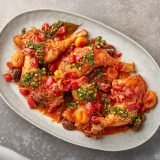To understand the soul of Catalan cooking, you need to wait.
It’s only at the final stage of nearly every dish—including the chicken braise I smell bubbling away in Barcelona—that the true flavor of this region is revealed, a finishing touch that is so much more.
Called a picada, the flourish at first seems too simple to make such a difference. Though infinitely varied and maddeningly hard to define (at least for those of us not steeped in the cuisine), a picada is a singular stroke that elevates, highlights and harmonizes a dish.
“A tablespoon fixes all the holes that are in any dish,” says Jordi Bages-Querol Esteva, a retired businessman and grandfather who’s been cooking all his life. He and fellow home cook Cali Caparrós Sanchez have offered to teach me pollo a la catalana, a saucy braised chicken, which of course would not be complete without a picada. “This knowledge doesn’t come from nowhere.”
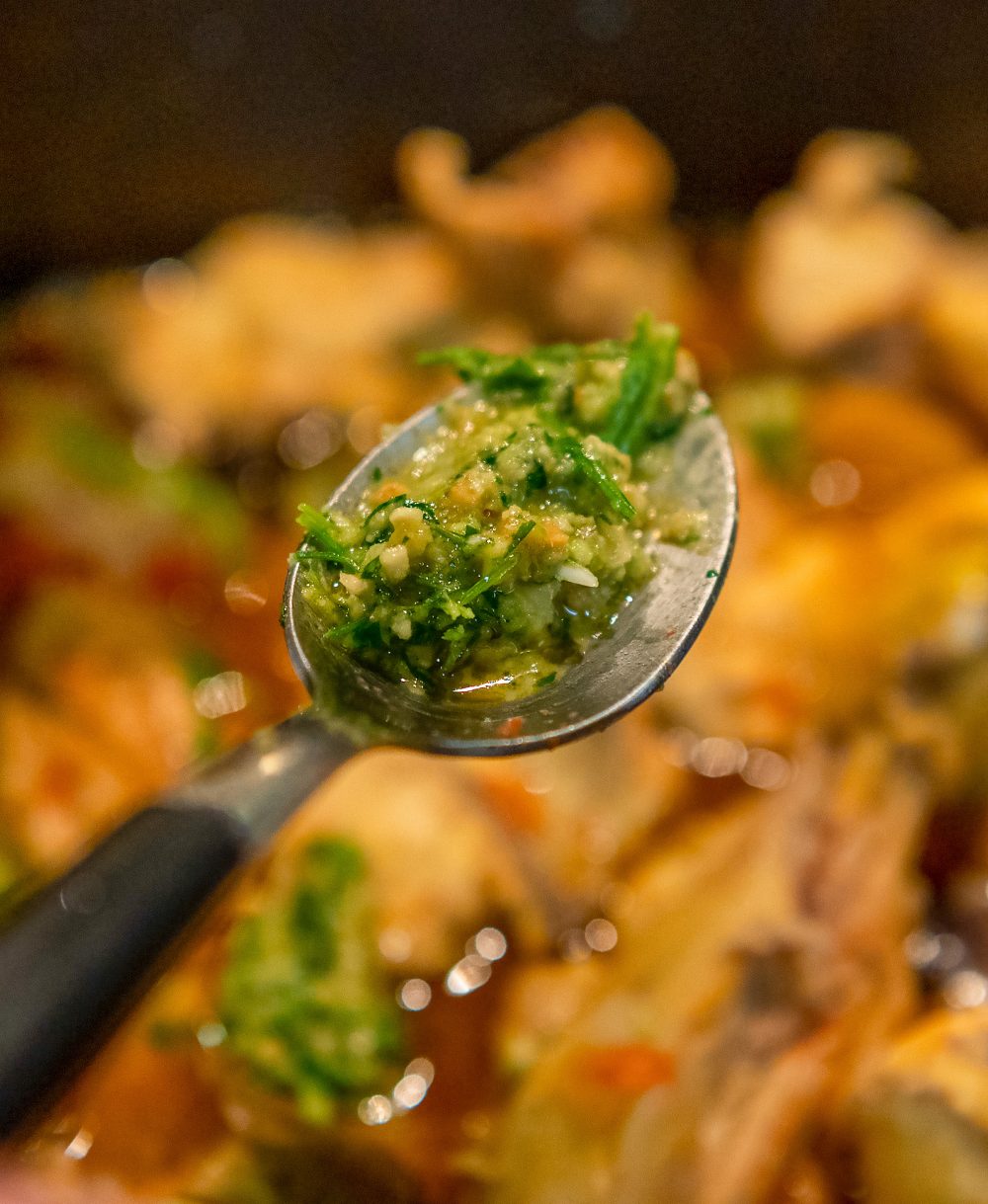
So let’s start there. Most simply, a picada is an almost-anything-goes mixture that typically includes raw garlic, some kind of nut, fresh herbs, stale bread and a host of other seasonings, all ground together with a mortar and pestle. Stirred into the pot at the last minute, it transforms just about every sauce, braise, soup, pot of chickpeas, even salad.
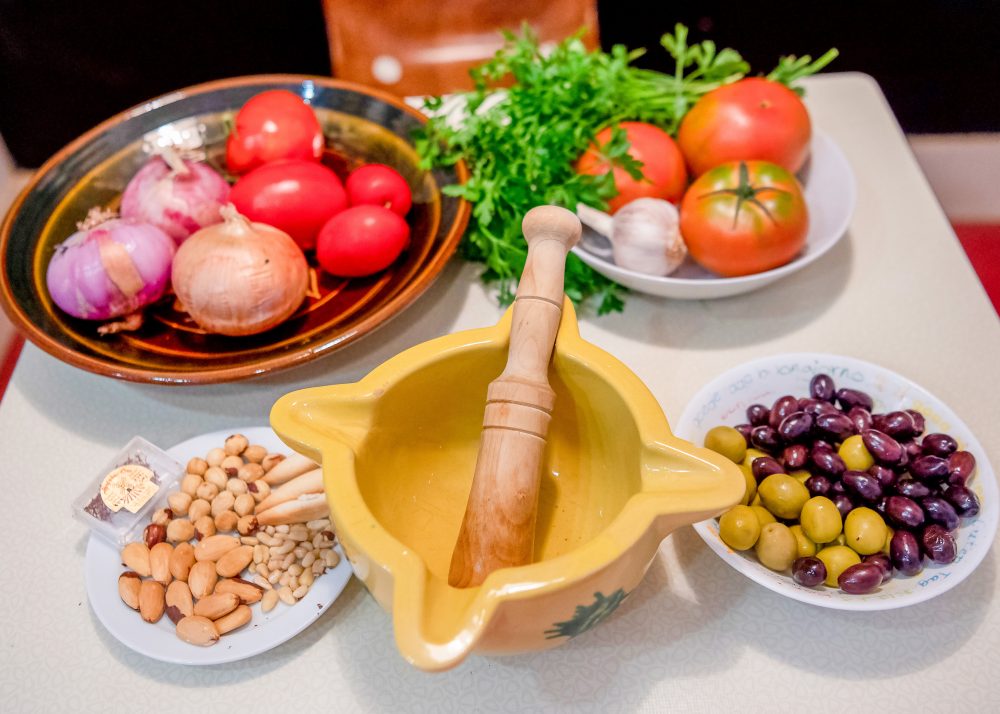
The specifics of any one picada usually are held close, stirred in on the sly before serving. Even detailed recipes usually only vaguely instruct the cook to “make a good picada.” But Bages-Querol is an open book, and he hands me a list of 20 dishes with his 20 preferred picadas to flavor and thicken each.
His braised beef is finished with a picada of garlic, almonds, saffron, pine nuts, anise seed and biscotti-like almond cookies called carquinyolis. Bitter greens get a picada of garlic, hazelnuts, toasted bread and sweetly fragrant ñora peppers. The picada for lobster stew has garlic, hard crackers and chocolate. Yes, chocolate. It’s said there is a picada for every palate.
Garlic seems the only common ingredient in most picadas; added raw, the allium cuts through the richness typical of many of the region’s dishes. But there are few other rules, except that the heavier the dish, the stronger the flavors of the picada.
Bages-Querol offers that pollo a la catalana—once a Christmas dinner centerpiece—is the perfect picada primer. From the outset, it’s a dish loaded with flavor, the chicken simmered with dried apricots, prunes and tomato, then spiked with brandy. But until the picada is added, it’s just another braise.
The picada nonetheless is pretty simple. While Caparrós—a grandmother of four and former model—prepares to add the chicken thighs and drumsticks, Bages-Querol uses a pestle to mash garlic cloves, almonds, fresh parsley and hard crackers in a yellow ceramic mortar.
The dish unfolds like a study in layering flavor. Caparrós slices the top third off a head of garlic and browns the cut side in olive oil; the cloves will mellow and soften in the braise, while the raw garlic in the picada added later will add intensity.
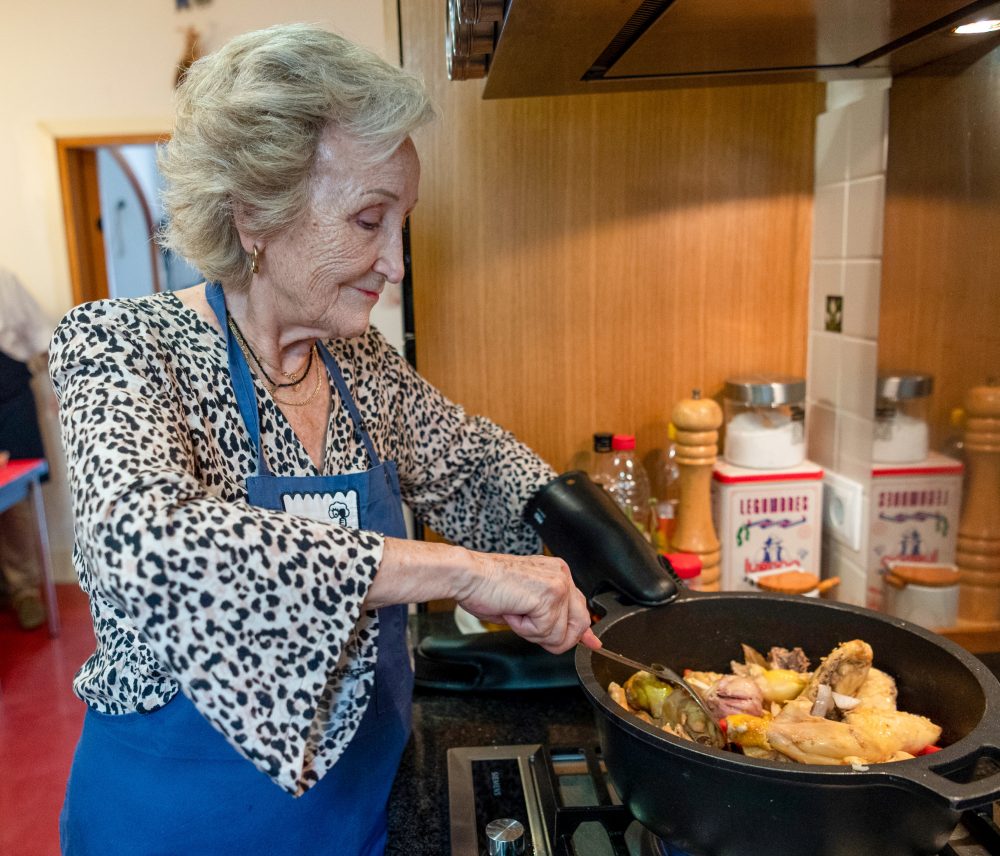
Caparrós browns the chicken with bay leaves, then adds chopped tomato and onion. Brandy is added in stages, once to deglaze the pan along with white wine, for sweetness and acidity, and again with the dried apricots and prunes, which she had soaked in the alcohol so they rehydrate and absorb its bite.
After tossing in the brandy-soaked fruit and a cup of water, she simmers the chicken uncovered, concentrating the flavors. A few minutes before the meat is fully cooked, I try the sauce. It’s tasty, but a bit sweet and one-dimensional. Clearly missing something. The dish is full of holes.
That’s when Bages-Querol’s picada comes into play. Caparrós spoons a few tablespoons of the braising liquid into the mortar, which helps the mixture incorporate into the sauce. The moment she stirs it into the pot, the kitchen fills with the aromas of fresh garlic and parsley.
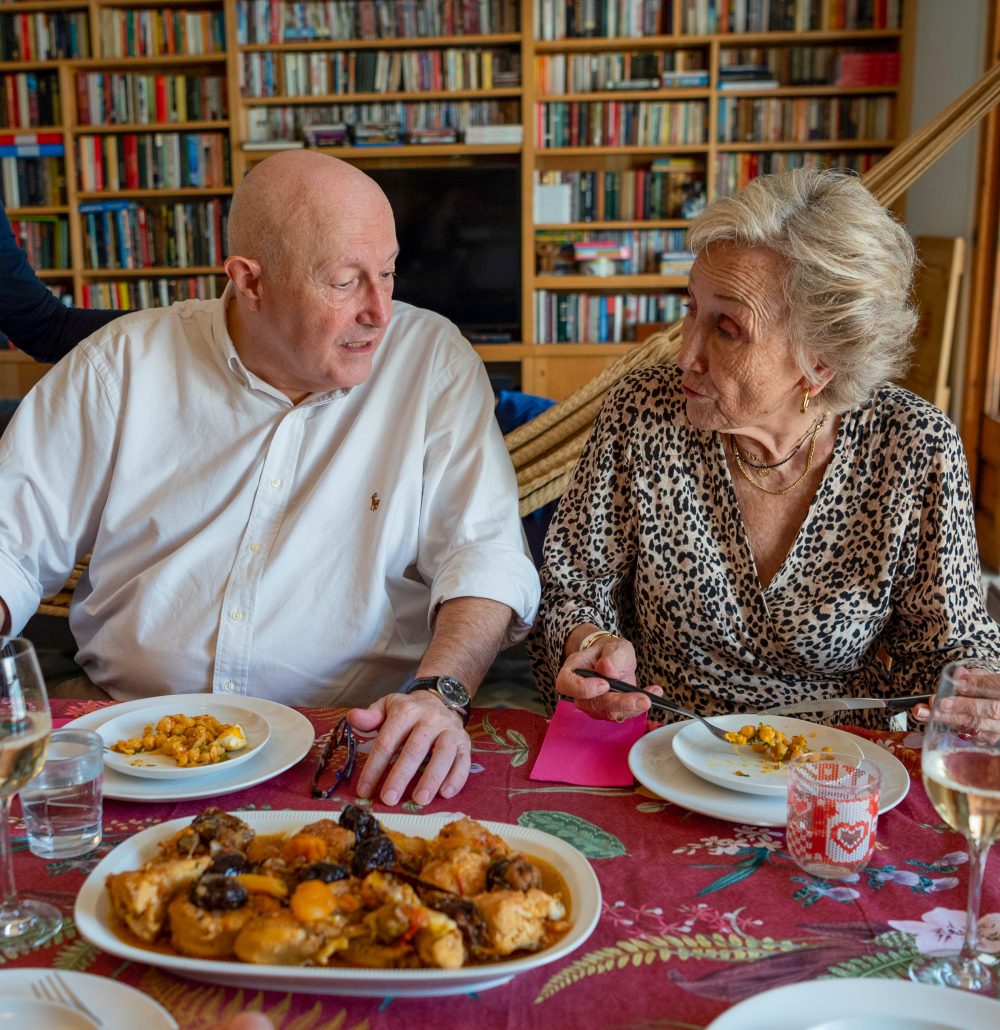
As the flavors mingle, Caparrós sneaks in another glug of bandy for good measure. “Don’t be scared,” says Caparrós, who, like Bages-Querol, gives classes through Grandma’s Cooking Barcelona. “You’ll see when you try it.”
She’s right, of course. The final touch of brandy adds another layer of complexity.
But it’s the picada that makes the real difference. The chicken emerges succulent, savory and lightly sweet, with tender bites of fruit and welcome texture from bits of almond. The garlic and parsley, still nearly raw, add a punchy freshness that balances the richness of the saucy braise. Without the picada, it simply wasn’t the same dish.
